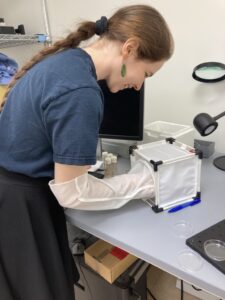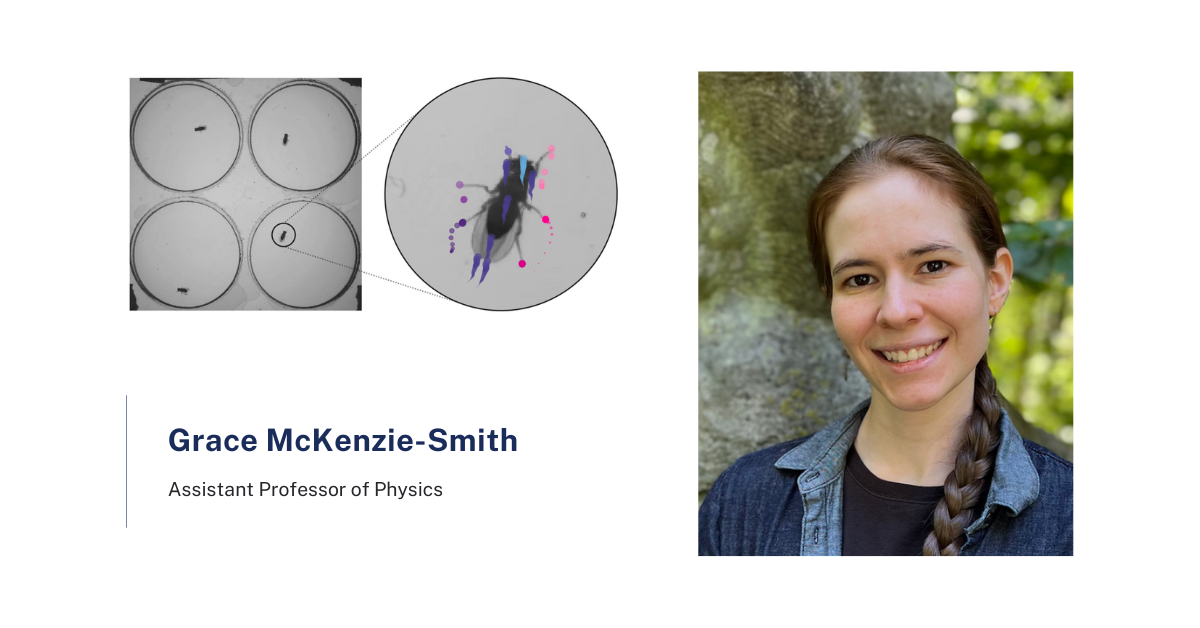How do we know what perturbations to cause in a social system to get the desired result? Assistant Professor of Physics Grace McKenzie-Smith is asking herself this question both in her research and her teaching. I sat down with Professor McKenzie-Smith in order to ask about her educational pedagogy, the research that she does, and her journey into physics.
McKenzie-Smith explained that her research primarily studies the fruit fly species Drosophila melanogaster and the ant genera Temnothorax and Leptothorax. After building environments for these insects, she introduces stimuli, or perturbations, and studies the outcomes. She, along with other behavioral physicists, is working to develop a predictive and quantitative understanding of social interactions among insects. In doing so, McKenzie-Smith follows the time evolution of these insects–as she puts it, she wants to “develop some sort of generalized understanding of this system where…if I apply this perturbation, then I will get this result”.
As she builds up her lab here at Wesleyan, McKenzie-Smith is also working with and for students to build a robust pedagogy in physics education. While her students may come from different educational backgrounds, she works diligently to make sure that they are all able to learn the material that she teaches (currently, Electricity and Magnetism).

The material presented in college physics is by no means simple, and there is not just one way to understand it. She explains to me that in her class, the “textbook does it this way. I’m going to do it this way in class. You’re going to do it this way on your homework. And hopefully between those three different approaches to understanding this one topic, one of them clicks enough”. As students put in the time, she hopes that they will be able to understand a subject no matter their prior educational experience. Just like the ants, by spending time observing how her students learn, struggle, and succeed, she hopes to develop an ongoing pedagogy for education in physics. Through her thorough teaching method, Professor McKenzie-Smith hopes to promote a learning environment in which every student can have access to the same fundamental concepts.
In addition, for McKenzie-Smith, a big part of inclusion and access in physics is thinking of yourself as a capable physicist. She herself did not “get it” until halfway through taking her high school version of Electricity and Magnetism when the concepts studied in physics finally clicked. For some students, simply understanding the material is enough–for others, however, she notes, a large part of seeing oneself as a physicist is seeing others like oneself in positions of power in physics. As there are more female physicists represented among the faculty, more female students looking to get into physics will think of themselves as physicists–and therefore be more likely to succeed, McKenzie-Smith explains. This is a perturbation that is well studied: more diversity within the physics faculty means more diversity within the students who study physics.
Much like understanding and creating social change in an ant system, understanding and creating systems to promote inclusion in STEM also means having a viable understanding of the culture of a physics department. As a graduate student at Princeton, as part of her work with the equity, diversity, and inclusion initiatives there, McKenzie-Smith pursued data collection with a climate survey for the department. Using the data collected there, McKenzie-Smith and her colleagues hoped to develop what was called a “theory of change”–a reflection from the department on “why we [the department] need to change and how we’re going to change”. The key, however, is generating buy-in: like scientific research, initiatives like this require student support, faculty support, and administrative support. Only by changing the way we engage socially on all levels can there be a truly diverse scientific community.


